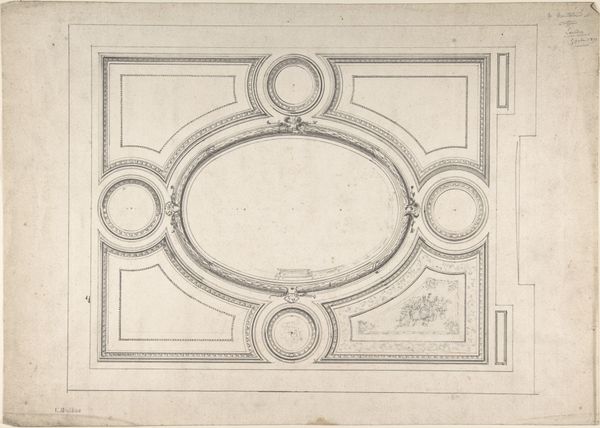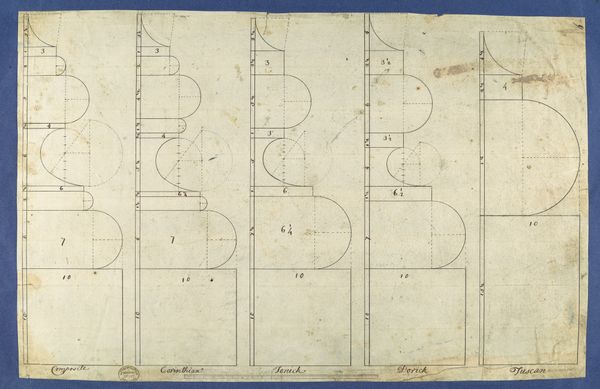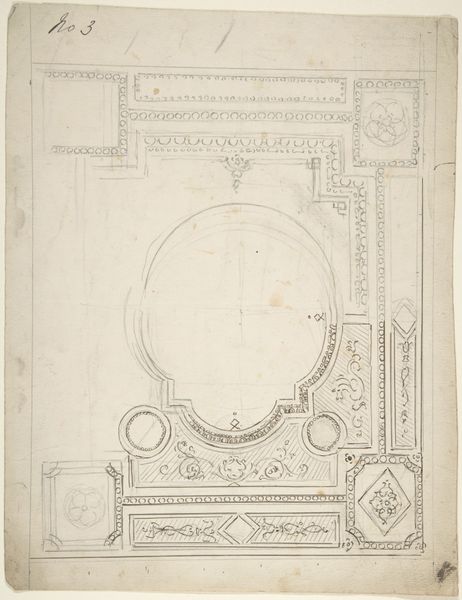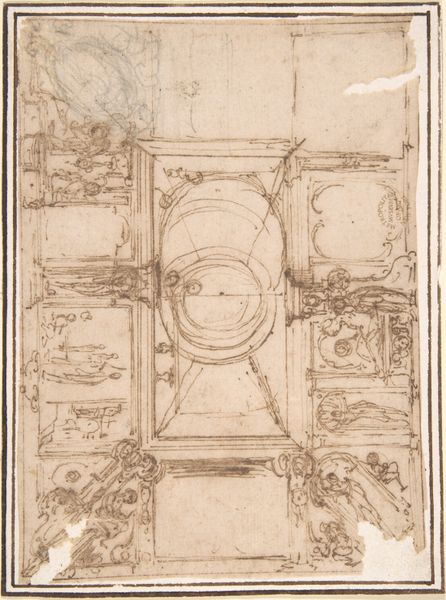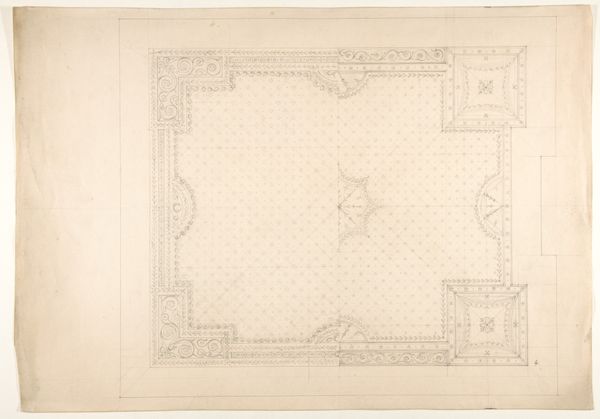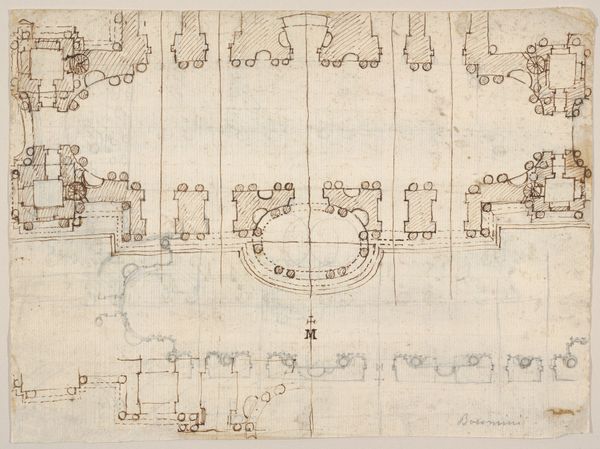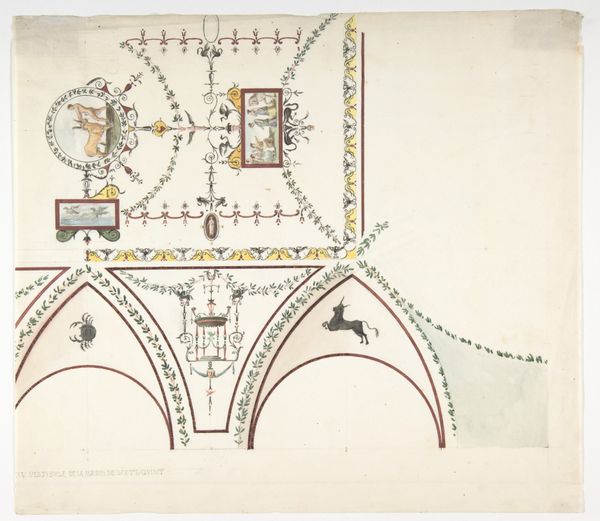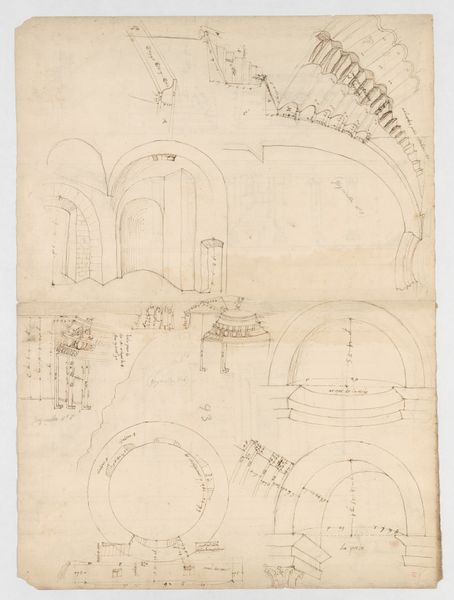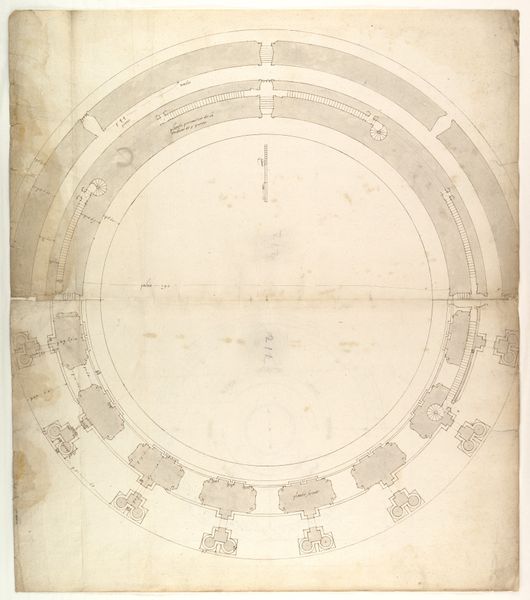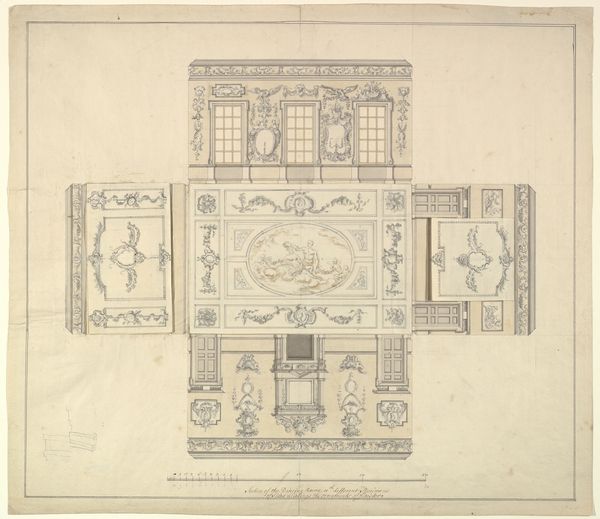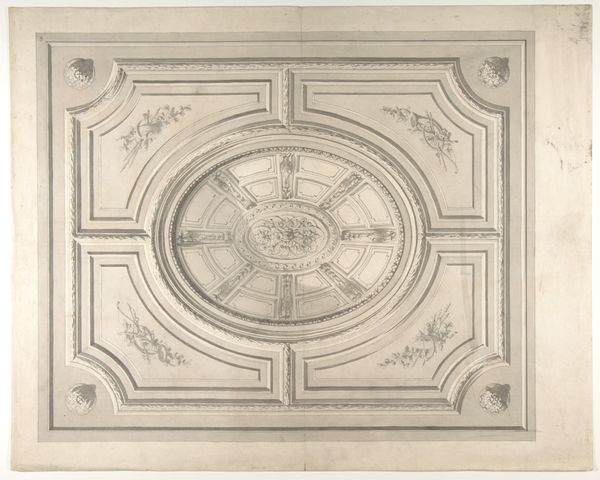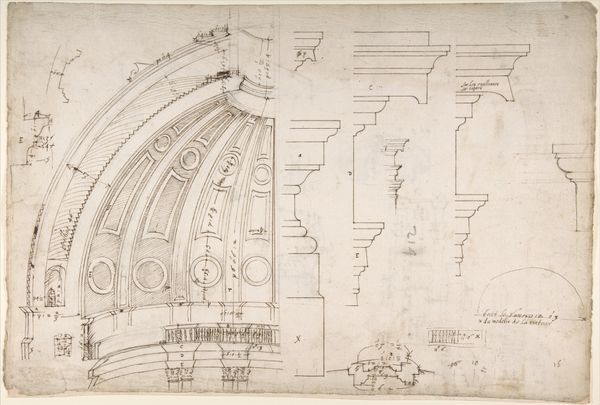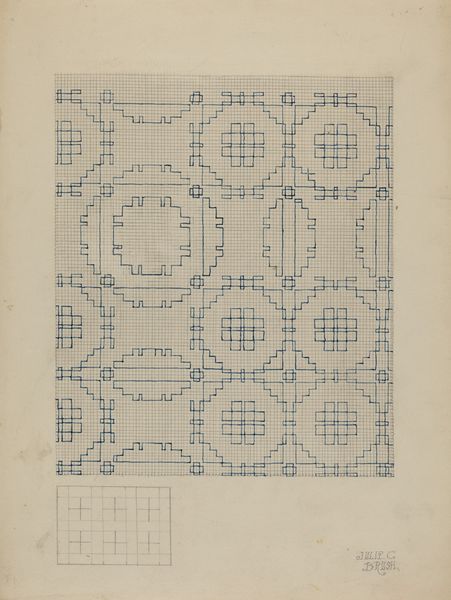
drawing, print, paper, pencil, architecture
drawing
classical-realism
paper
geometric
pencil
architecture
Dimensions: 15 7/8 x 10 1/2in. (40.3 x 26.7cm)
Copyright: Public Domain
Curator: What an intriguing design. Here we have a "Designs for Ceiling," dating back to the 19th century. The artwork, attributed to Charles Monblond, presents us with an architectural rendering. It’s rendered with pencil and ink on paper, currently residing at the Metropolitan Museum of Art. Editor: My initial impression is one of formal elegance. The drawing’s restrained palette contributes to this, though one can easily imagine the design embellished with gilded accents in a physical space. There's an interesting juxtaposition of precision and almost dreamlike ephemerality. Curator: Yes, the restraint really lets the design speak for itself. Viewing this, I'm immediately thinking about the influence of Neoclassicism on interior design during this period. The use of geometric shapes and symmetrical layouts echoes a desire for order, proportion, and a return to the aesthetics of ancient Greece and Rome. It represents the public face of power, designed to overawe and display, doesn't it? Editor: Absolutely. And the details are replete with meaning. Notice the use of circles and ovals, contained in these strong octagonal borders and lush embellishments; traditionally, circles represent wholeness and continuity, emblems of divinity. Consider what sort of social aspirations the owner had that would warrant such symbolism over their head! Curator: Indeed. Such elaborate ceiling designs weren’t just decorative; they signified status and cultivated aspiration. Consider the social rituals performed in such spaces – conversations, gatherings, performances – each reinforced by the grandeur and loaded with embedded power dynamics, don’t you think? Editor: Certainly, a space designed to reflect status and aspirations also shapes them in turn. And look at the subtle floral patterns included; an embrace of the natural world, suggesting bountiful harvests and endless life. But what catches my eye is the faint unfinished quality on the bottom, which makes this piece feel caught between concept and materialization. Curator: That’s a great observation. It underscores the creative process – the conceptual architecture of societal display slowly coming into being through artistic means, but at the mercy of market needs. Editor: Exactly. Seeing it today has certainly provided new dimensions to the cultural language that surrounds us. Curator: I agree. It reminds me of how important it is to consider the full socio-political narrative behind these images.
Comments
No comments
Be the first to comment and join the conversation on the ultimate creative platform.
